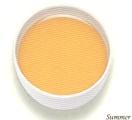| |  | | | | | Basically four types of grades are produced in Darjeeling. They are: Whole leaf :
FTGFOP:Fine Tippy Golden Flowery Broken Orange Pekoe. SFTGFOF: Special Fine Tippy Golden Flowery Broken Orange Pekoe |
 |
 |
Broken leaf:
FTGBOP: Fine Tippy Golden Broken Orange Pekoe. FBOP: Flowery Broken Orange Pekoe. TGBOP:Tippy Golden Broken Orange Pokoe. BOP: Broken Orange Pekoe |
Fannings:
GFOF: Golden Flowery Orange Fannings GOF: Golden Orange Fannings |
 | |
Dust:
D: Dust |
Tea tasting
 |
Darjeeling tea tasting is a refined art which confines to the professional tea tasters. This technique conforms to a standard procedure that ensures the valid comparisons between the tea samples. For this purpose tea samples are laid out in batches and liquor is prepared from each one. Tea tasting accessories comprise of porcelain tea pots of 100 ml, sand watch of 5 minutes and stainless steel kettle. For tasting, 2 percent tea brew is prepared for which 2 g made tea is infused for 5 minutes in just boiled 100 ml of distilled water.
| The
liquors are poured off into porcelain
bowl and the infused leaf is shaken on
to the lid by inverting the cup. The inverted
lid with infused leaf is replaced on the
cup. For valuation purposes these liquors
are tasted without milk and sugar while
a blender prefers to taste the liquor
with milk in little larger cups.In
organoleptic assessment of tea quality,
tea taster first examines the dry tea
for colour, uniformity, tips and aroma
and then passes on to the infused leaf
which ideally should be devoid of green
tinge and full size unfold leaf bearing
copper colour. A quality cup is judged
by bright, clear and less coloury liquors
with maked greenish –pinkish tinges
meniscus where the liquor touches the
bowl. During tasting the liquors are sipped
into mouth with inward breath. This brings
the liquor into intimate contact with
the tongue, palate and the buccal cavity
of the mouth which are physiologically
sensitive to the flavour, strength and
astringency. The sipped liquor is not
swallowed but expectorated into the spittoon.
A tea taster’s report relate to
the leaf style, brightness, colour, astringency,
flavour and order of preference of tea
samples. With the whole process he also
describes manufacturing disorders/mishandling
of leaf in the factory with appropriate
suggestions for rectification. | | | Tea quality and Seasons Nestling in the foothills of the snow covered Himalayan range, Darjeeling grows this exclusive tea at altitudes ranging from 600 to 2000 metres. The cool moist climate, the soil, the rainfall and the sloping terrain, all combine to give Darjeeling its unique ‘Muscatel’ flavour and exquisite bouquet. The exquisite qualities of Darjeeling tea manifest themselves distinctly during the growing season from March to November each year.
Tea
quality is assessed by subjective judgement
of the tea taster. So far, no chemical
index is established for the quality.
In general, quality of Darjeeling tea
is characterized by the presence of higher
level of monoterpenes and differs significantly
with Assam and south Indian teas on this
parameter. The later teas are, however,
rich in non-terpenoids. A quantitative
change in the level of terpenoids and
non-terpenoids bring about the changes
in the quantity of flavour of these teas.
To date around 600 volatile flavoury compounds
are known to exist. Characteristic “muscatel
flavour” of Darjeeling teas are
reported to be associated mainly to comply
with viz. 2, 6–dimethyl–3,
7–octadiene–2, 6–diol
and 3, 7– dimethyl–1, 5, 7–octatriene-3–ol. |  | After a period of dormancy in the winter months, in March and April the bushes offer delicate new shoots which provide a grey-green glazed leaf appearance, a light clear liquor, fresh bright and lively character with a pleasant hint of mild astringency to the palate. The infused leaf has a prominent lime greenish brightness and a floral scent. These are the “Spring teas”. |  | The famed Darjeeling “Summer teas” are produced from May onwards. The succulent leaves result in a very attractive tea with a purplish bloom and a sprinkling of silvery tips (buds). The liquor characteristics show a change, tasting round, mellow, mature, sometimes with a pronounced muscatel flavour and more colour in the cup than in spring. During this period, the infused leaf turns a bright copper / purple colour, expressing a rich and full bodied aroma. |  | “Monsoon teas” have more colour, and are stronger produced from mid-July to September. These form the bulk of the “breakfast’ blends. |
 |
Autumnal
quality” makes its presence felt
during the months of October and November.
The appearance of the tea takes on a light
copper / brownish tinge and liquors have
a delicate yet sparkling character, a
delightful flavour distinctly different
from both spring and summer teas. The
infused leaf has a coppery gold brightness
with a sweet, fresh ‘nose’. | Even
within this broad categorisation of quality
changes over the seasons, individual estates
consistently assert their personalities
as distinctly recognizable individual
entities. This complexity gives Darjeeling
tea a part of its legendary appeal. | | | |
| |
| | |
|
|
|